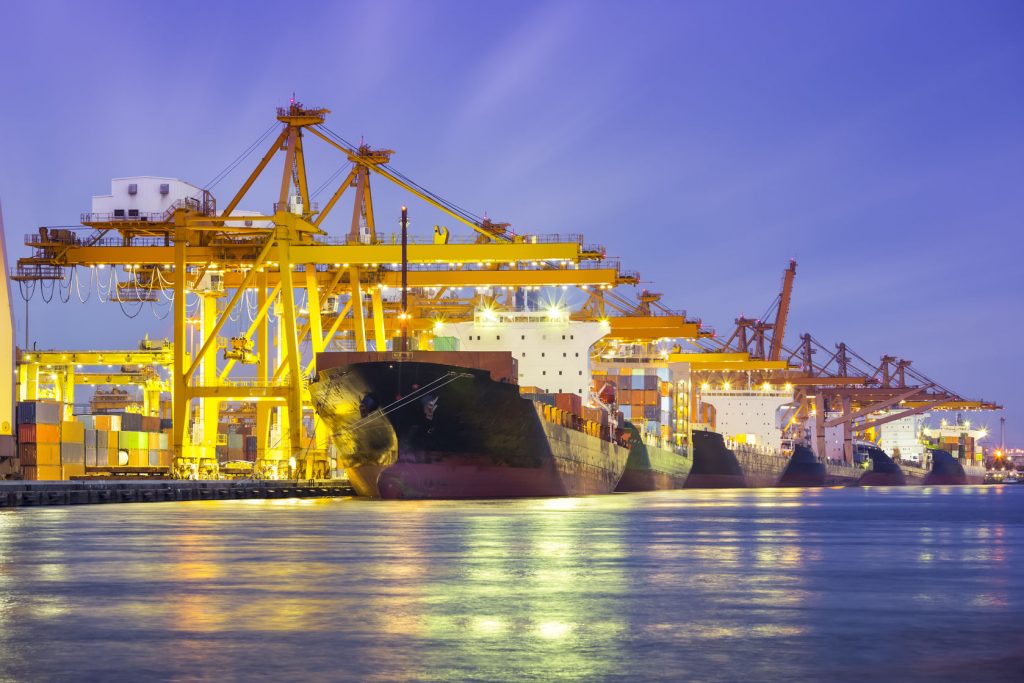
Latin America Transport and Logistics 2015
Available to download todayAbout the Latin America Transport and Logistics 2015 report
For the first time, Ti has collated its research into the Latin America transport and logistics industry into a single report. It offers detailed insight into this region of extremes, including overviews of a variety of logistics markets, including contract logistics and freight forwarding, from a regional perspective, as well as analysis of the logistics challenges that surround certain vertical sectors, such as agriculture, high tech and healthcare.
Not only this, the report includes comprehensive profiles of 21 Latin America countries. Included within these is an overview of the logistics markets within that country as well as analysis of the infrastructure. In addition, Ti has profiled a mix of both domestic (16) and international (11) logistics providers operating within the region.
Latin America Transport and Logistics 2015 also includes Ti’s bespoke market size data, forecasts and analysis from both a regional and country-level perspective.
This report contains
- Detailed country profiles including analysis of the main logistics markets and infrastructure
- Market sizing and growth up to 2017
- Domestic and International logistics provider profiles including
- SWOT analysis
- Overview of the region including trends and developments.
Exclusive highlights on logistics providers in Latin America
- Niche pharmaceutical providers, as well as international logistics service providers such as DHL, are becoming more prominent as the pharmaceutical market develops.
- DHL, FedEx, TNT and UPS provide domestic express services Brazil and Mexico, which are likely to expand further as demand increases.
- LSPs have primarily targeted the region’s leading economies, with services that facilitate growth alongside the development of major international clients in the region’s leading vertical sectors.
Exclusive highlights on the economics of Latin America
- Colombia has invested in its ports and airports in anticipation of transhipment opportunities from the Panama Canal.
- Argentina’s Tierra del Fuego region has become a centre of high tech manufacturing due to lower manufacturing costs. However, it is over 3,000 km from Argentina’s main market.
- Brazil and Mexico are the largest countries in the region. Combined, these two countries comprise almost 60% of Latin America’s GDP. Many of the logistics activities and growth prospects for the region lie with these two countries.
- Economics
- What is the trade relationship between Latin America and other emerging markets?
- How might Latin America benefit from free trade agreements?
- Vertical sectors
- Which vertical sectors are the most prominent in the region?
- How do supply chains vary by vertical sector in Latin America?
- Logistics markets
- How big are the contract logistics, freight forwarding and express markets?
- Which countries are the largest, in terms of market size?
- Country profiles
- Which Latin America countries benefit from strong infrastructure?
- Which logistics providers have been developing in Latin America countries?
- Logistics provider profiles
- How do the strategies of international logistics providers vary?
- Which domestic players are winning in the region?
- A region of extremes, the region is a top exporter of agricultural goods and a global automobile producer, but government regulations, political instability, economic upheavals and poor infrastructure seem to constantly hold this region back from growth.
- The widening of the Panama Canal has brought opportunities and economic benefits, not only to Panama, but also to the countries surrounding it.
- Brazil and Mexico are the largest countries in the region. Combined, these two countries comprise almost 60% of Latin America’s GDP.
- Mexico’s automotive industry has benefitted from its proximity to the US, while Brazil’s automobile production has been hit with economic troubles.
- The high tech manufacturing sector demonstrates the impact troubling government regulations and taxes can have on an industry.
- Cold chain opportunities are increasing due to the importance of agricultural exports. In addition, pharmaceuticals handling and clinical trials are expanding in the region.
- Ti estimates that domestic express expanded 15% between 2012 and 2013, with Brazil the largest market, followed by Mexico.
- International LSPs are well represented in Latin America, providing both domestic and international services. However, one of the greatest strengths domestic LSPs have is their knowledge of how domestic markets actually work and the intricacies surrounding government regulations and taxes.
- Examining the capacity and capabilities of major international LSPs operating in Latin America revealed business growth strategies in the region to be, in general, variations on a standard theme.
David Buckby
Lilith Nagorski
Lilith Nagorski is Head of Ti’s Research Department. Lilith joined the company as a Researcher working primarily on the providers’ area of the GSCi portal and quickly brought improvements to the organisation of the department. As such, Lilith took on the responsibility for managing Ti Reports and now she manages the full team of researchers and analysts. Lilith’s focus is on quality and her goal is to ensure that Ti research products continue to lead the market.
Alex Le Roy
As a graduate in International Relations, Alex brings a variety of knowledge and interest to his role as an Analyst at Ti. Alex’s drive to constantly provide quality analysis for the logistics industry has led him to increase his area of responsibilities to include investigating the potential for new products, training new recruits, and scanning the horizon for the next big thing.
23rd March 2015, Bath, UK: A region of extremes, Latin America is geographically and culturally diverse. However, Ti’s latest report, Latin America Logistics and Transport finds that a recurring theme throughout this vast region is the need for infrastructure improvements and loosening of regulatory requirements. Indeed, opportunities are great but will be missed if these factors are not addressed. For example, cold chain needs are growing thanks to the rise agricultural exports and in pharmaceutical handling and clinical trials expanding in the region. As a result, there is a need for temperature-controlled warehousing and transportation. In addition, the widening of the Panama Canal is bringing new opportunities into the surrounding area including expansion of ports and airports to meet the potential transhipment needs.
According to lead writer of the report, “The region’s greatest enemy is itself. In order for Latin America to reach its true potential, it will have to overcome its infrastructure issues once and for all as well as its bureaucratic and corrupt practices.”
While the opportunities are great, supply chains are unique for this region as companies work around infrastructure and regulatory issues. Many of these supply chains encompass Brazil and Mexico which combined, comprise almost 60% of Latin America’s GDP. However, the disparity between these two large economies is widening as Mexico enjoys its close proximity to the US and Brazil becomes further mired in taxation, regulations and strikes. Once the region’s export leader in electronics and automobiles, Brazil has now taken a back seat to Mexico.
Ti’s Trade Analyst notes that this disparity between the region’s largest economies will likely grow further as more companies move production to Mexico to take advantage of NAFTA credits as well as lower labour costs.
However, despite the heavy dependence on trade with North America, global trade is changing for this region. Trade with emerging markets in Asia, Africa and the Middle East is on the rise. Furthermore, intra-region trade is considered the fourth largest trade partner behind North America, Europe and Asia. But, as noted by a few supply chain practitioners, managing customs clearance between countries is difficult at best as much of it is still not automated.
Still, while there are challenges to operate in this region, its growing middle-class with its purchasing power combined with improving social and health programs are presenting new opportunities. How it will overcome itself as its major enemy will be played out in the years to come as Latin American countries look towards government reforms to stimulate a region rich in opportunities.
To find out more about the report please contact Michael Clover.
This report is perfect for
- Global manufacturers
- Supply chain managers and directors
- Banks and financial institutions
- Consultants and analysts
- Marketing and knowledge managers
- All C-level executives

